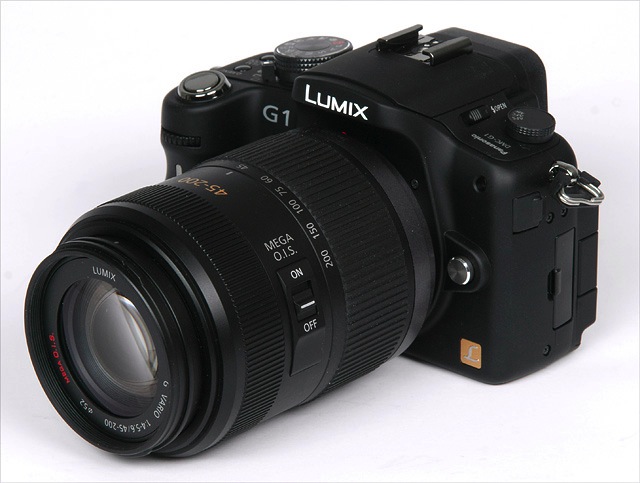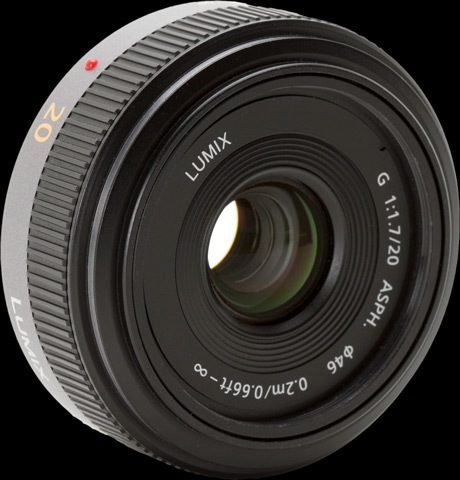A sweetheart in use.
I looked at the design of this lens in Part I. Nothing could more clearly illustrate the difference in size between a full frame 400mm and Panasonic’s 45-200mm:
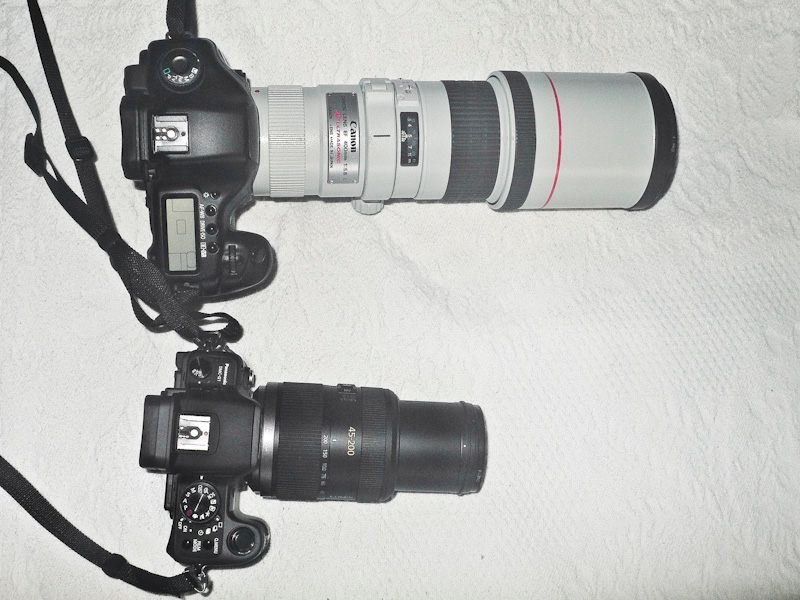
The Panny is at 200 (=400mm on full frame), the Canon has no choice in the matter!
The hood on the Canon is not extended for fair comparison. Weight differences are just as impressive.
Update February 2011: The above picture which, let’s face it, is fairly ridiculous, coupled with a failing back and increasing tendonitis which makes it hard for me to lift weights, saw me sell the superb Canon 400mm f/5.6L lens to a happy, younger user.
I took the Panny out for its first street trip today and found that it is a real sweetheart to use. Forget the dumb lens hood which makers it look gargantuan; without it no one would begin to think that so long a focal length is in use and while, I suppose, it’s great for clandestine stuff, that’s not my thing, so I just played about enjoying some architectural details in the old town of Burlingame, CA.
I used Lightroom 2.6 for processing with sharpness settings on import of 100/1.1/64 and ISO set at 320. I find that speed to be the sweetspot – grain is not objectionable in large prints and you have enough sensitivity that short shutter speeds are the norm. I mostly used full aperture as I have had such success with it on the 14-45mm kit lens.
A guilty confession. I popped the kit lens in my jacket pocket even though I resolved not to use it. So enamored am I of its quality and compactness that I thought I might need a quick fix, so better safe than sorry. In the event I managed to keep it off the G1 but dropping it in a jacket pocket took me way back to when I last did that with a lens – that would have been with Leica’s ne plus ultra 35mm Asph Summicron-M with its 90mm Asph brother mounted on the Leica M2. Nice glass, but hopelessly outmoded today with auto-nothing and if their optical quality is marginally better, Lightroom can fix that and the Panny lenses are one tenth of the cost. I’m tempted to say “throw away cheap” and while that sounds arrogant, that will likely be their fate when something better comes along in a few quarters.
For the pictures which follow, the focal length is stated at actual on the G1; double the number for the 35mm full frame equivalent.
While web reproductions cannot do the originals justice, the fringe here is to-die-for sharp:
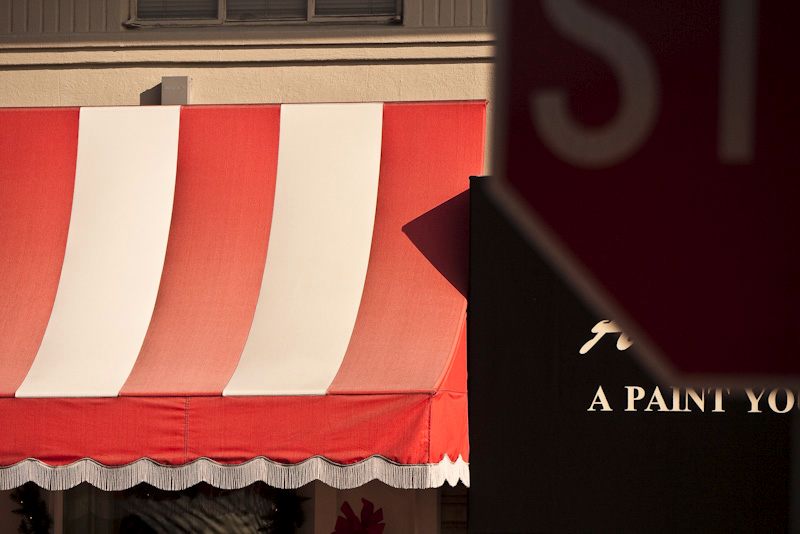
At 128mm, f/6.3, 1/3200, ISO 320
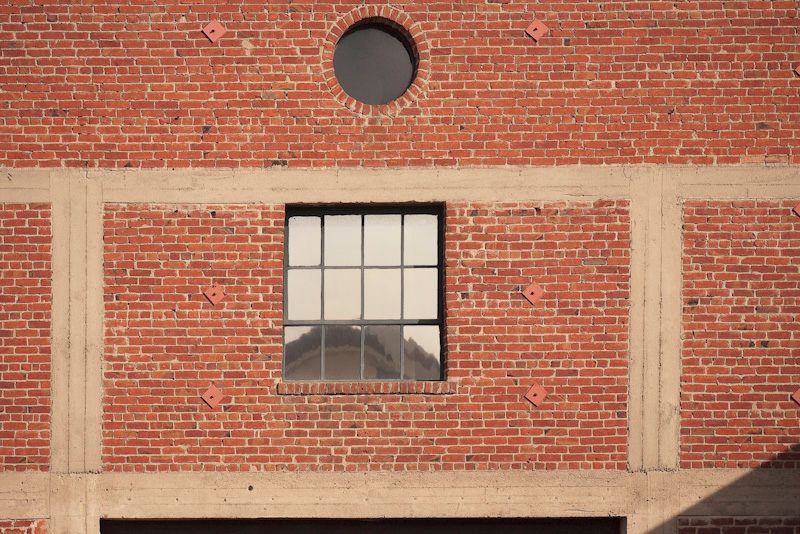
No, not a test chart. Just some nice brickwork. At 61mm, f/4.1, 1/4000, ISO 320
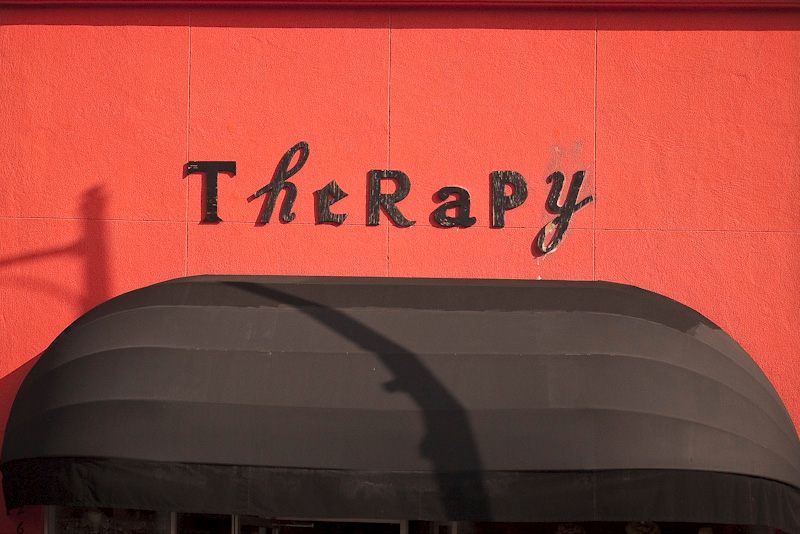
No lack of detail in the textured stucco here. At 45mm, f/4, 1/4000, ISO 320

Nothing wrong with the detail in this lovely relief.
I especially like the eccentric alignment of the letters. At 124mm, f/5, 1/2000, ISO 320

At huge enlargement ratios the micro detail is lower than with the Canon, but the Panny is the one you take with you.
At 45mm, f/7.1, 1/500, ISO 320

At the local brew pub. At 91mm, f/10, 1/5th, ISO 320
I meant to set the lens to full aperture but somehow messed up and was awfully lucky to get away with this at 1/5th second exposure at a 35mm-equivalent of 182mm. Sometimes you get lucky. This pretty girl is the hostess at the local Steelhead Brewing Company restaurant which makes a nice selection of very decent beers right on the premises. They even serve them at something approximating the right temperature, meaning not ice cold. The staff seems to mostly consist of aspiring actors and actresses, judging by their looks. I was enjoying a Red Zeppelin at the time – who could turn down that name?
As is my usual approach, I used aperture priority and auto-everything (except ISO) for all of the above. It’s so nice not to have to worry about the technical mumbo jumbo and just take snaps. More of these at Snap! over the next few days.
On one or two very high contrast color transitions I noticed a touch of blue fringing, but nothing major. The software correction of aberrations is pretty thorough in Lightroom.
If you like baggy jackets with big pockets but lack big pockets for the exotic glass, this sweetheart of a lens is just what the doctor ordered. I’m keeping mine. Is the Canon better? Absolutely. But it can’t be very good when it’s at home, which is the likely result when you can choose between it and the Panny zoom.
Often photographers will find they are using zooms at maximum extension. No problem here – if you need a 400mm equivalent, the only thing currently available in micro-four-thirds size is this lens and you have a bunch of other useful focal lengths thrown into the bargain, at no additional cost.
When the next generation of sensors and EVFs comes along in a year or two I suspect we will all be wondering how we managed with those gargantuan clods of old. The only challenge will be for professionals, who will have a job convincing clients to take their G2 with its miniscule 20-200 f/2 lens seriously ….
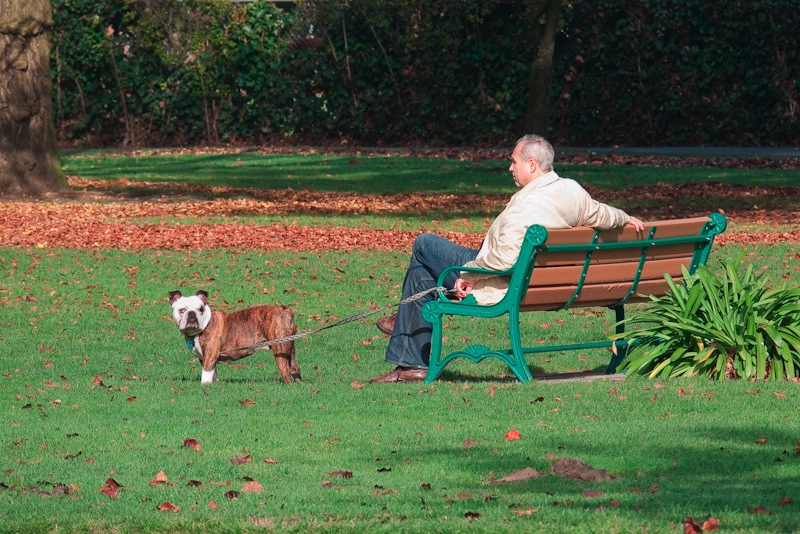
Woof! At 200mm. f/11, 1/250, ISO 320








